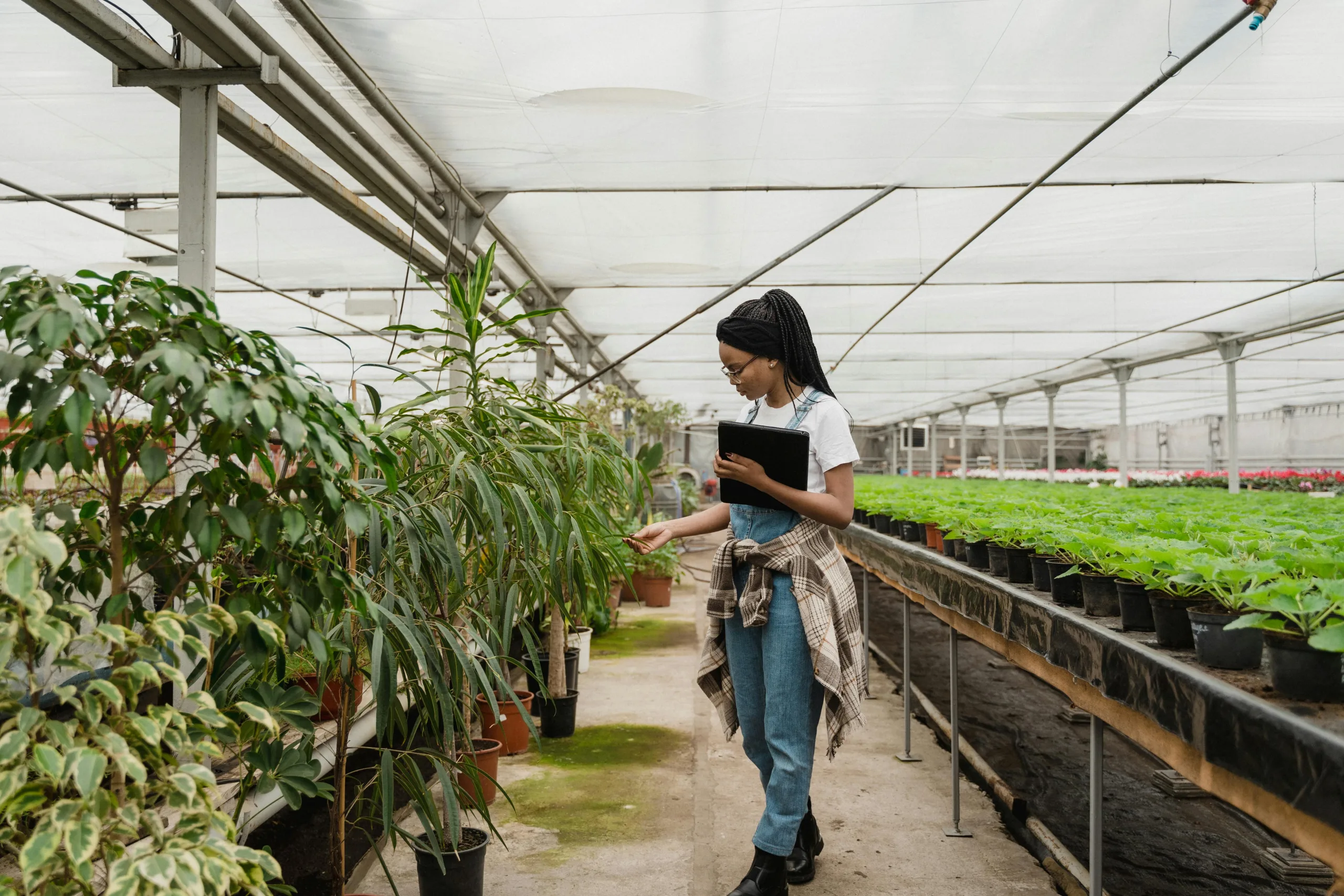Horticulture Plant Health Course – Learn to Protect and Nurture Plants Effectively
Strong, healthy plants are the foundation of successful gardens and crops. In this online Plant Health course, you’ll explore the science of keeping plants thriving by understanding pests, diseases, nutrition, and environmental stress.
This course is ideal for:
-
Gardeners and landscapers
-
Horticulture and agriculture professionals
-
Nursery staff and plant retailers
-
Anyone who wants to boost plant vitality and reduce loss
What You’ll Learn:
-
How to diagnose plant health problems accurately
-
The difference between pests, diseases, and physiological disorders
-
Best practices in integrated pest management (IPM)
-
Soil health, plant nutrition, and environmental stressors
-
How to implement sustainable and cost-effective health strategies
Whether you’re working with ornamental plants, food crops, or native species, this course gives you practical knowledge to protect plant health and improve outcomes in any growing environment.
Study 100% online, at your own pace, with support from experienced horticulture tutors. Enrol anytime and start growing healthier, more resilient plants today!
Course Aims:
- Identify the characteristics of pests and diseases of plants.
- Explain methods for the control of pests and diseases.
- Describe the characteristics of a range of different pesticides, including insecticides and fungicides.
- Explain the selection and use of spray equipment appropriate for different specified tasks.
- Describe aspects of the biology of an insect which are relevant to pest control.
- Describe aspects of the biology of an fungus which are relevant to disease control.
- Explain how inappropriate environmental conditions can affect plant health.
- Identify the characteristic signs of a range of non-insect pests, and select appropriate control methods.
There are 10 Lessons in this course:
There are 10 lessons in this course:
- Introduction
- Pests
- Diseases
- Common terminology
- Diagnosing problems systematically
- Tell tale symptoms
- Conducting an inspection: four steps
- Pest or disease reviews
- Overview of Preventative Controls
- Introduction
- Methods of pest management
- Integrated pest management
- Cultural control
- Using disease resistant varieties
- Crop rotation
- Timed planting
- Mulching
- Cleanliness
- Biological control
- Types of biological controls
- Beneficial plants
- Trap or decoy plants
- Pheromone traps
- Physical controls
- Traps
- Repellents
- Mulching
- Pruning
- Wounds
- Chemical controls
- Understanding pesticides
- Safely storing chemicals
- Safely mixing chemicals
- Legalities
- Plant breeding for resistance
- Sources and causes of resistance
- Adaptability, resistance and pest variability
- Insecticides
- Types of insecticides: systemich, stomach poisons, contact poisons, etc.
- Inorganics, botanicals, organophosphates, carbamates, synthetic pyrethroids
- Characteristics of insecticides: toxicity, spectrum, LD50, persistence, volatility, etc.
- Golden rules for handling pesticides
- Terminology
- Other Pesticides
- Chemical Pesticides: introduction
- Review of common pesticides
- Soil treatment for control of diseases
- Soil pests
- Types of fumigants
- Systemic fungicides
- Comparative toxicities
- Spray Equipment
- Types of sprayers
- Uses of sprayers
- Spray terminology
- Sprayer maintenance and cleaning
- Selecting a sprayer
- Calibration
- Using chemicals: agitation, clean up and disposal
- Basic first aid with chemical pesticides
- Response to liquid or powder spills
- Keeping records
- Misters, Dusters, Blowers
- Pesticides and the environment
- Insect Biology
- Insect classification: orders, sub classes
- Insect anatomy: mouthparts, legs, etc
- Lifecycle
- Feeding habits
- Practical project: Insect collecting, preserving, identifying, for an insect collection
- Common insects that a gardener encounters
- Ants
- Aphis
- Beetles
- Borers
- Bugs
- Caterpillars
- Cockroaches
- Crickets
- Earwigs
- Fleas
- Flies
- Galls (caused by insects)
- Grasshoppers
- Ladybirds (good and bad)
- Leaf hoppers
- Leaf miners
- Lerps
- Mealy bug
- Mosquitos
- Scale insects
- Termites
- Thrips
- Wasps
- Whitefly
- Fungal Biology
- What causes disease
- Symptoms of disease
- Lifecycle of a disease: inoculation, penetration, infection, growth and reproduction, dissemination
- Fungi groups: obligate saprophytes, obligate parasites, facultative saprophytes, facultative parasites
- Expanded concept of tree decay
- Chemical pesticides in the UK and Europe
- Common diseases
- Anthracnose
- Bitter pit
- Blights
- Botrytis
- Canker
- Cinnamon fungus
- Club root
- Damping off
- Galls
- Gummosis
- Leaf curl
- Leaf spot
- Melanose
- Mildews
- Rots
- Rust
- Scab
- Silver leaf
- Spot
- Smut
- Sooty mould
- Wilts
- Environmental Problems
- Common environmental problems
- Foliage burns
- Pollution
- Lack of water
- Drainage problems
- Frost
- Hail
- Shade
- Temperature
- Wind
- Symptoms of nutritional deficiencies
- Air pollution
- The plant and water
- Non parasitic problems in turf (lawns)
- Ways to provide environmental protection to plants
- Viruses
- Overview
- Symptoms
- Detection and diagnosis of viruses
- Control
- Examples of virus diseases
- Nematodes, Molluscs and Crustaceans
- Overview
- Millipedes
- Plant nematodes
- Nematodes in citrus
- Red spider mites
- Spiders
- Slaters or wood lice
- Snails and slugs
Each lesson culminates in an assignment which is submitted to the school, marked by the school’s tutors and returned to you with any relevant suggestions, comments, and if necessary, extra reading.
When you have completed the lessons of your Certificate course, you will be given the option of taking the optional exam. It’s okay if you don’t want the exam, we still issue your Careerline Certificate. For Advanced Certificates however, the exam is compulsory (per module) and are included in the course fee.

